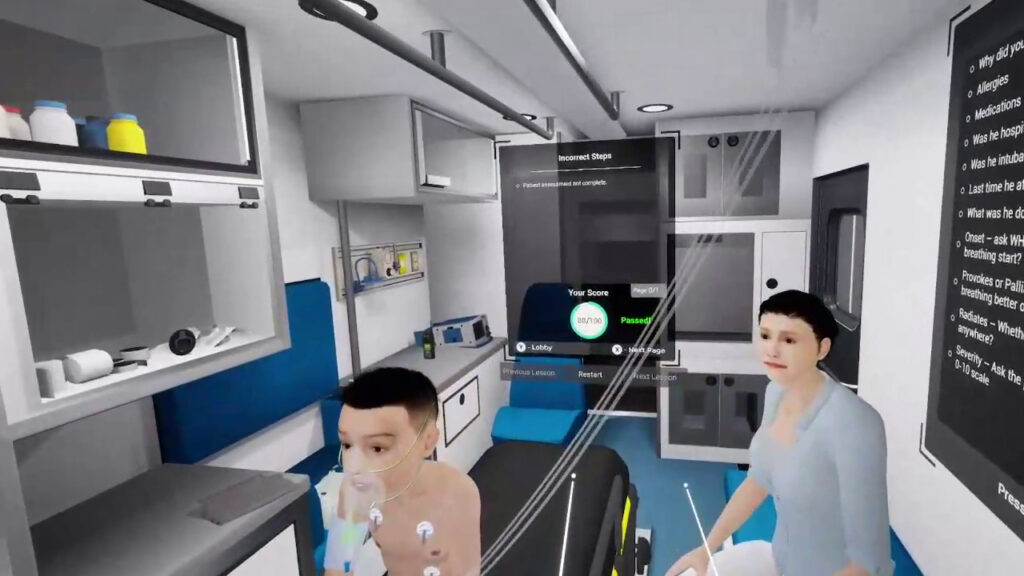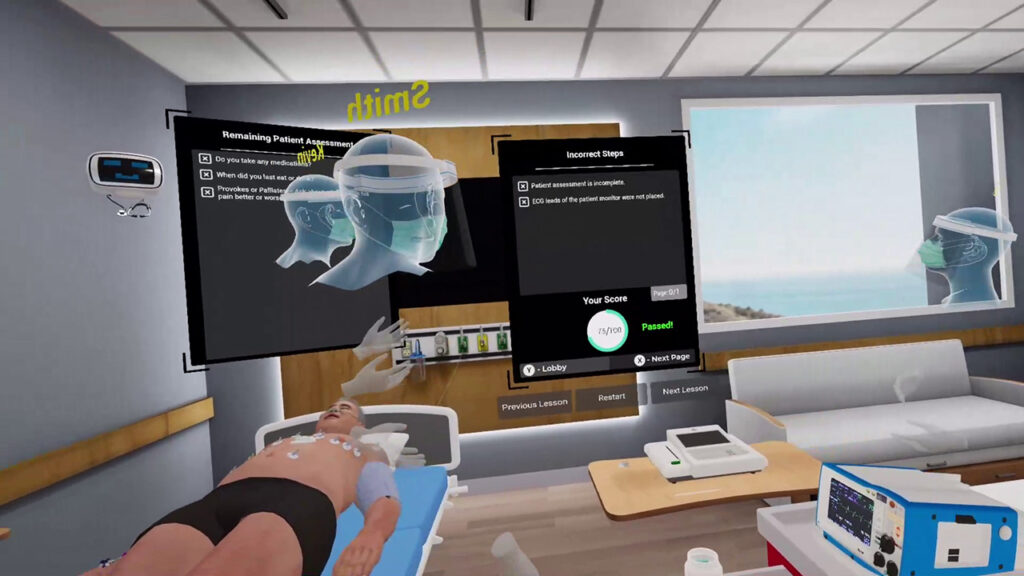What are Virtual Reality Medical simulations?
Virtual Reality Medical simulation consists of computer-generated 3D environments of either real-world replicas or fictional worlds. With the use of VR headsets, users can ‘step into’ these virtual worlds, interact with the environment and perform tasks using the affordances available in the virtual space. VR simulations provide users with an immersive experience which can create a lasting impression.

Are Virtual Reality Medical simulations suitable for training?
Though VR was initially used for gaming purposes its worth is largely being realized in the training domain as well. Some of the areas in which VR simulations are increasingly being used include:
– nursing education
– surgery practice
– allied healthcare skills training
– pilot training
– defense and combat
– strategic planning
– police training
– soft skills and compliance training
– working on oil rigs
– heavy machinery training
– fire-fighters training
and many more.

What are the benefits of Virtual Reality Medical simulation training?
VR simulations place learners in a virtual, true-to-life environments, equip them with affordances, and allow them to perform tasks. As per the scenario settings, learners can act individually or as a team. Training sessions in virtual reality simulations hold benefits like:
Immersive experience: Photorealistic VR world equipped with affordances enables learners to interact with and within the environment, providing an immersive and engaging learning experience.
Practical training: Training in a Virtual Reality Medical simulation means performing tasks. Users get hands-on practice in skills, a much-required element for efficient learning. Practicing real-life like tasks in a virtual world prepares learners to face real-world challenges with confidence.
Distraction-free: When completely immersed in a VR environment, distractions are eliminated, creating an ideal learning environment for learners. It is a known fact that distraction-free learning delivers highly successful results.
Active participation: Being part of a VR simulation, learners get to be an active participant in the learning session. Courses in VR are designed from the learner’s perspective making them learner-centric.
Instant feedback: Action in a VR environment will generate instant feedback. With instant feedback the learner will be able to judge for themselves how they have fared. Success and failure results will be instantly available.
Learning from mistakes: Mistakes can be an effective way to learn and VR provides this opportunity. Being virtual environments, learners have the liberty to make mistakes, take chances, read results and, depending on the outcome, decide the next step or improve upon mistakes.
Risk-free training: High-risk jobs like fire-fighting, managing medical emergencies, etc. are difficult to replicate for training purposes. Not so in the virtual world. VR allows replicating true-to-life scenarios, no matter how high-risk they are, for training purposes. Learners can practice in realistic settings and gain real life-like experiences, and in the process, confidence.
VR Simulations Training can Transform Medical Education
Cutting across geographical boundaries: This works in ways more than one. (1) Learners can access and be part of VR learning sessions from any part of the world. (2) Learners from multiple locations can join as a team to learn and perform in one combined session. (3) A person in North America can visit Europe, or for that matter any other location, without having to leave the comfort of their room. (4) Difficult to access locations like the peak of the Everest or the bed of Pacific can be accessed with ease.
Not bound by time periods: The Stone Age was a long time ago. The fall of the Berlin Wall was a significant event. These are part of history and the present generation cannot see them. Or can they? VR simulations make it possible to cut across timelines and visit the past or even speculate what the future could look like.
Repeated practice sessions: One VR simulation can be used for repeated training sessions. Unlike a physical setup, VR scenarios do not get altered or require revamping after every session. A few clicks, and the learner is able to start afresh, as many time as required.
No recurring costs: From the trainer and organization’s perspective, VR simulations are highly cost effective. Recurring expenses for inventory, large training premises, maintenance, repair etc. are eliminated.
Mere knowledge of a skill does not make a person skilled at the job. What is required is consistent practice in realistic scenarios. When learners practice skills in true-to-life scenarios they gain real world experiences which foster better knowledge retention and application. This, without any doubt, is the recipe for effective and efficient learning.